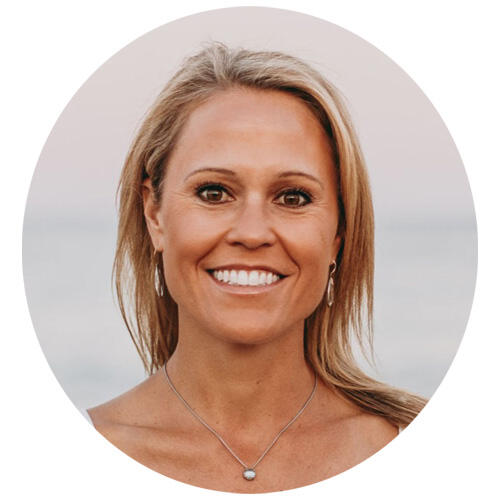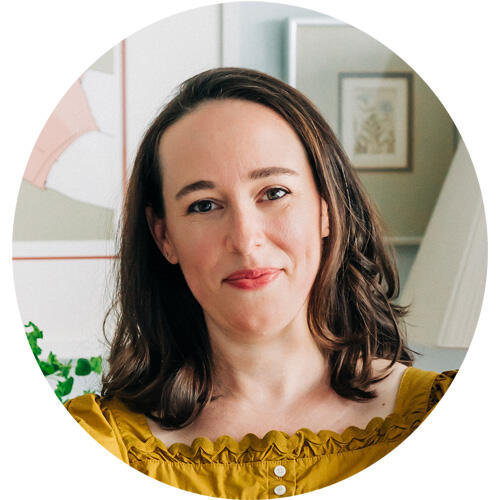There isn’t one set path to becoming an interior designer, so we asked five industry professionals—André Jordan Hilton, TJ Monahan, Marnie Oursler, Sarah Rinehart Fleischer and Byron Risdon—how their first jobs set them up for success.

Lessons in Empathy
“My very first real job was at a small commercial firm in Baltimore. I would document the conditions of abandoned buildings that were identified for potential redevelopment. This was way before laser tapes were ubiquitous or lidar scanners were accessibly priced—it was graph paper and a tape measure in a building with no electricity. Many a shoe was lost to stepping in a puddle of unidentified liquid. [This work] shaped my career in a lot of ways, but the two biggest are that I realized that commercial work isn’t for me and I only want to work on single-family residential projects; and that I have way more empathy as a manager than I would have without that experience.” —TJ Monahan, Designed Happy, Kensington, Maryland

Importance of a Mentor
“My first job in the design industry was as design assistant to Gary Crain of Crain & Ventolo Associates in New York. Getting my start there had a huge impact on my career trajectory. Gary was well known and well respected in the industry, and he was more than willing to mentor me and expose me to a world of design I didn’t know existed. Those early experiences set the stage not only for the goals I would set for myself and the types of projects I wanted to work on, but most importantly, for who I wanted to be and how I represented myself.” —Byron Risdon, Byron Risdon LLC, Washington, D.C.

High Risk, High Reward
“In 2004, I took a giant leap into the design industry by venturing into my first custom home project, which was a spec house that marked the inception of Marnie Custom Homes. Leveraging the profits from a recent flip, a loan, and the knowledge gained from my earlier experiences on construction sites with my father’s home-building company, I poured my passion into this design-build project. Upon completing the home, I orchestrated an open house on Memorial Day weekend, the biggest weekend of the year at the beach, and invited the entire town. Balloons lined the streets, friends and family rallied, and it paid off—I secured my first job that day, building a beach home for a couple who took a chance on me. That pivotal moment shaped the trajectory of my career, laying the foundation for my firm today.” —Marnie Oursler, Marnie Custom Homes, Bethany Beach, Delaware

The Golden Rule
“My first job in the industry was a hybrid personal assistant/design assistant position for Celerie Kemble. She taught me an immense amount about style, design, color, pattern mixing, how to manage a project and a budget—the list goes on and on! I will never forget when I first started working for her and she said something along the lines of, ‘No matter what you do here, be kind and be a nice person—obviously to our clients, but also to vendors, contractors and anyone you work with.’ It’s very simple, but it remains a core value and has brought me success in starting my own business. This industry is small, and your relationships don’t end when a project or a job does. It (quite literally) pays to be kind.” —Sarah Rinehart Fleischer, SRF Interiors, Brooklyn

Learning What You Love
“My first job in the design industry was an internship with Michel Smith Boyd Interiors in Atlanta. I was 26, a self-taught decorator with a degree in architecture. I quickly learned that there was a fine line between being a decorator and being a designer: the details! My first duty in the office was organizing huge drawers of fabrics by color, pattern, texture and textile. Seeing hundreds of beautiful fabrics was a playground for me to get to know what I liked and didn’t like. Surely this was a test of my eye, and to help familiarize my vision into all four categories. It also taught me the amount of detail and organization necessary to create the most beautiful designs and tailor them to each client—and most importantly, it developed my texture-driven aesthetic. Once I mastered the fabric drawer, I quickly moved into the field of projects. Being on-site daily helped me understand how to work with clients, contractors, budgets and installations. Consultations, however, helped me understand the client. The rule of thumb is 85 percent listening and 15 percent execution. Fast-forward to today: My internship equipped me to run an organized full-service interior design firm for 14 years and counting. I learned how to look at rooms from a different perspective—[not] just making it pretty, but making it functional and fit for the clients’ day-to-day life, and stretching my clients by providing them ideas they would’ve never considered on their own.” —André Jordan Hilton, Jordan Hilton Interiors, Atlanta




























